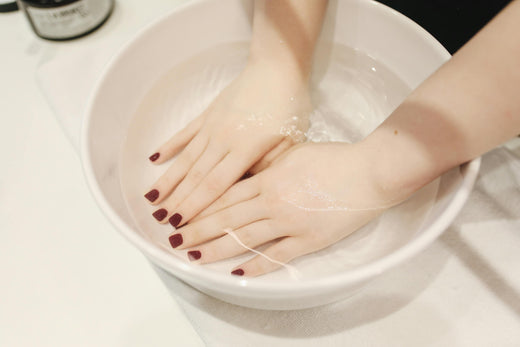
The Science Behind Strengthening Nail Treatments That Actually Work
Share
By Sofia Grant
As a chemist with a passion for beauty and wellness, I often hear people ask, “Do strengthening nail treatments really work, or are they just a marketing gimmick?” The good news is that some products are indeed effective, but understanding the science behind them can help you choose treatments that truly deliver results. Let’s explore how these treatments work and what ingredients to look for.
Understanding Nail Structure
Before diving into treatments, it’s essential to understand what nails are made of. Nails are composed of keratin, a tough protein that forms layers, giving nails their structure and durability. Factors like excessive water exposure, harsh chemicals, or nutritional deficiencies can weaken the keratin structure, leading to brittle, peeling, or soft nails. Strengthening treatments aim to rebuild and protect this structure.
Key Ingredients in Nail Strengthening Treatments
Here are some scientifically proven ingredients that make nail treatments effective:
-
Keratin
Many nail treatments include keratin to reinforce the natural protein structure of nails. This helps repair damage and improve overall resilience. -
Biotin (Vitamin B7)
Biotin is one of the most researched vitamins for nail health. Studies have shown that it increases nail thickness and reduces splitting and brittleness over time. -
Hydrolyzed Collagen
Collagen supports nail elasticity and hydration, preventing breakage. When used in treatments, it can strengthen the bonds within the nail layers. -
Calcium
Calcium helps harden nails, making them less prone to peeling. It’s often found in strengthening polishes and base coats. -
Plant Oils and Extracts
Oils like jojoba, argan, and almond provide deep hydration and seal in moisture. Hydrated nails are more flexible and less likely to crack. -
Formaldehyde (in controlled amounts)
While controversial, small amounts of formaldehyde are still used in some treatments to harden nails quickly. However, frequent use can lead to brittleness, so it’s best to use sparingly.
Types of Strengthening Treatments
-
Nail Hardeners
These are designed for soft nails and work by forming a protective barrier over the nail plate. Look for products labeled “flexible strength” to avoid over-hardening. -
Hydrating Treatments
These target dry, brittle nails by infusing them with moisture and locking it in. Hydration-focused treatments often contain ingredients like hyaluronic acid or glycerin. -
Protein-Based Treatments
These rebuild the keratin structure, making nails stronger from within. They’re especially effective for nails that have been damaged by overuse of polish or acrylics. -
Multivitamin Treatments
These combine vitamins and minerals essential for nail health. They’re great for those looking for overall nail wellness.
Common Misconceptions
-
Myth: Strengthening treatments work overnight.
While some treatments provide immediate results, long-term strength comes from consistent use and proper nail care. -
Myth: You can rely on treatments alone.
Treatments are only one piece of the puzzle. A balanced diet, proper hydration, and avoiding harsh chemicals are equally important for healthy nails.
Tips for Maximizing Results
- Apply treatments as directed. Overusing can sometimes have the opposite effect, leading to brittleness.
- Wear gloves when using harsh chemicals. Protect your nails from unnecessary exposure to cleaning products and detergents.
- Take breaks from nail polish. Allow your nails to “rest” between manicures to avoid over-drying.
- Supplement your diet. Include biotin-rich foods like eggs, nuts, and leafy greens to support nail health from within.
Final Thoughts
Not all nail treatments are created equal, but with the right knowledge, you can find products that truly work. Look for scientifically-backed ingredients, stay consistent, and combine treatments with good nail care habits. Healthy, strong nails aren’t just a dream—they’re a reality when you invest in the right solutions!
